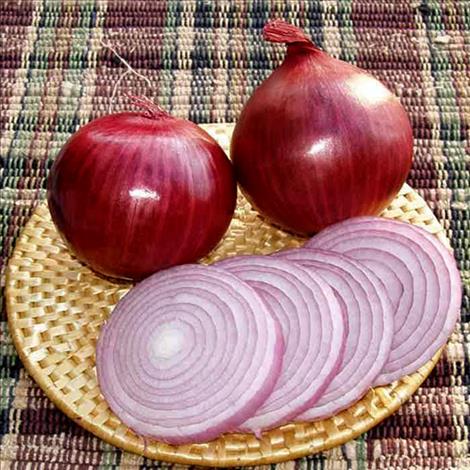Onions can be planted outside starting mid-April
Hey savvy news reader! Thanks for choosing local.
You are now reading
1 of 3 free articles.
Onions regulate their growth by day length. Short-day varieties grow best in the South; here in the north we grow long-day varieties of onions. When the days reach 14 to 16 hours long, the long-day onions begin to form bulbs. The greater amount of growth prior to bulbing determines the ultimate size of the onions, so it is a good idea to start seeds inside and grow the plants on until you can put them out in the garden.
Start your onion seeds in early spring, in darkness, or with the seeds completely covered with soil. A good germination temperature is about 68 degrees F. Once the plants are up, put in bright light and grow them cool. Keep them moist (actively growing onions like a lot of water.) Harden off the seedlings in a cold frame, or by putting them outside for a few hours each day, exposing them to longer and longer periods outside. After they are hardened off, onions can take some frosts, so you can plant them outside, in Montana, usually beginning in mid-April.
In your garden, put your onions in full sun, in a spot where onions have not been grown for at least four years. (Keen organic gardeners rotate their crops so that it is four years before plants are put in the same place in the garden. This practice builds soils and prevents a host of disease and insect problems). The best growing temperature range for onions is 55-75 degrees F. A soil pH of 6.8 is ideal.
If you are growing bunching onions (scallions) you can direct-seed them one-half inch deep at a rate of 1 oz. per 200 square foot bed. If soil temperature is up to 50 degrees, you can plant. Germination time is 7-28 days.
If you are transplanting seedling onions or onion sets, transplant plants 2-3 inches deep, 1 inch apart in rows. Mulch your plants lightly (with organic straw) when plants are about 8 inches tall, but mulch no more than 2 inches deep. If you are direct-seeding, sow in rows 12 inches apart, one-half inch deep and thin to one inch apart, as early as possible. Be sure to give your onions plenty of steady, even moisture. Onions like more water than most crops. (More water than shallots and garlic.)
Some pests that love onions include: gophers, onion maggots, slugs, leafhoppers and thrips. A garlic spray in May and another in mid-June will help deter insects.
Harvest green onions when they are pencil-thick or more. Carefully wash the roots clean. Keep them cool, out of the sun, and store cool, with high humidity.
Prepare to harvest bulb onions when the tops are flopped over. First, withhold water so protective skins form over the bulbs. If not all tops have flopped over, push them over so sun reaches the bulbs. Wait about one week; then pull them up. Cure them in an airy shed or garage at about 75 to 85 degrees F, leaving the dirt to dry and fall away from the bulbs. When dry, you can wipe off the dried soil from the outer layer of skins. Store onions in a cool, dry, well-ventilated area, and keep from freezing over winter.
















